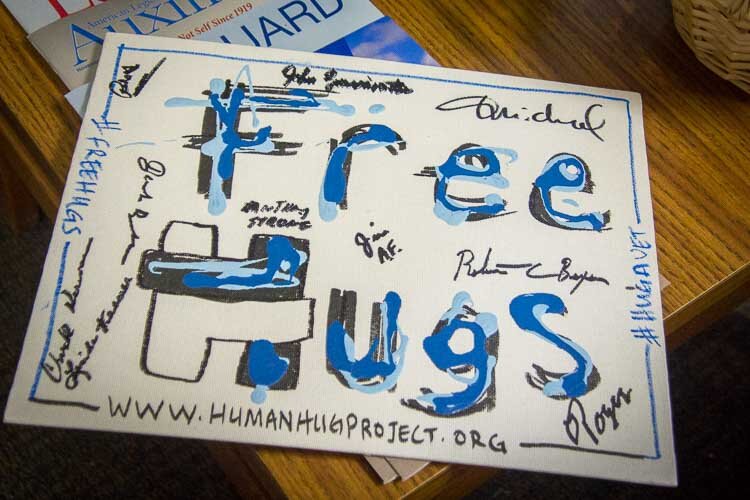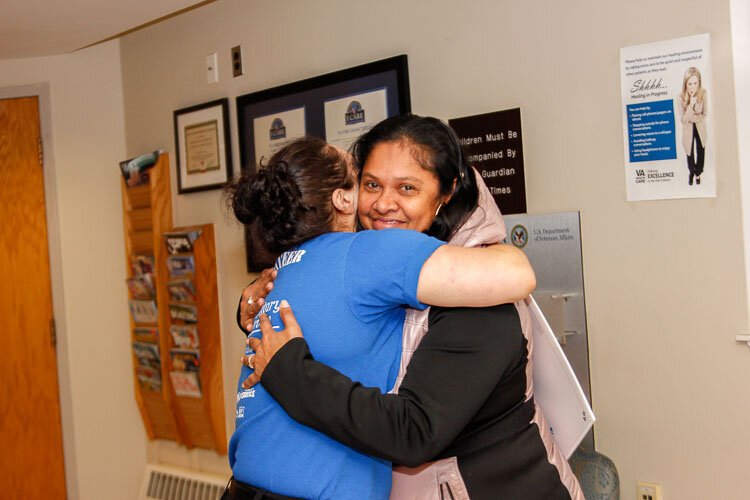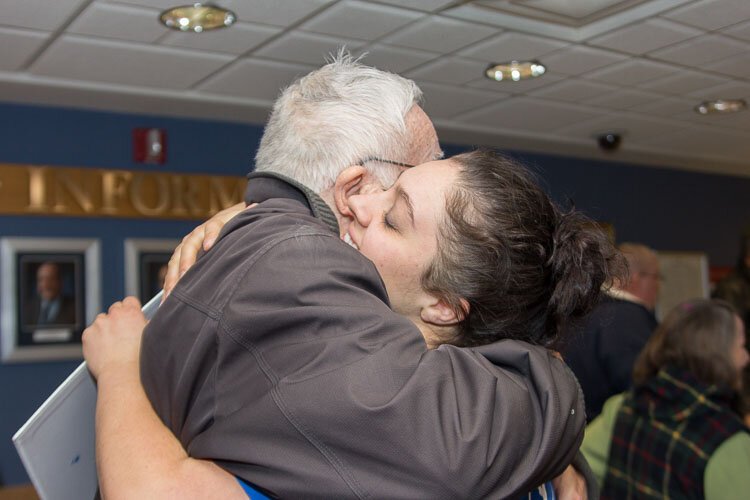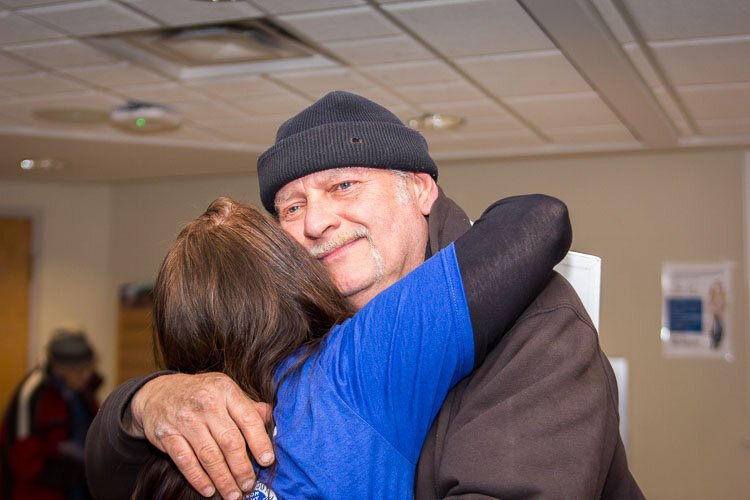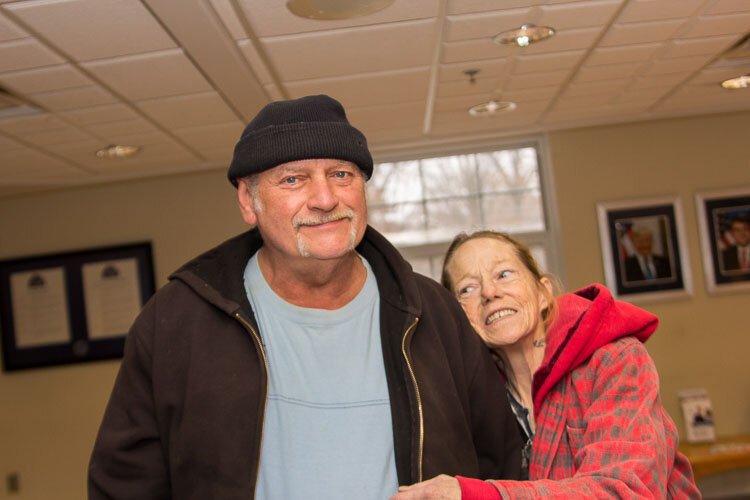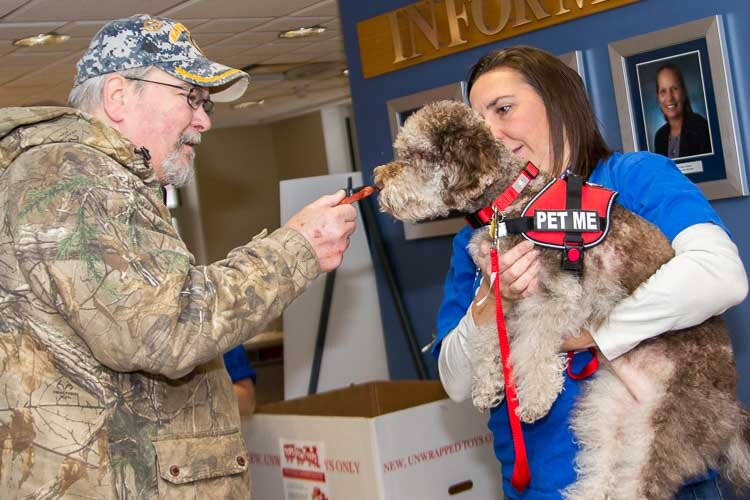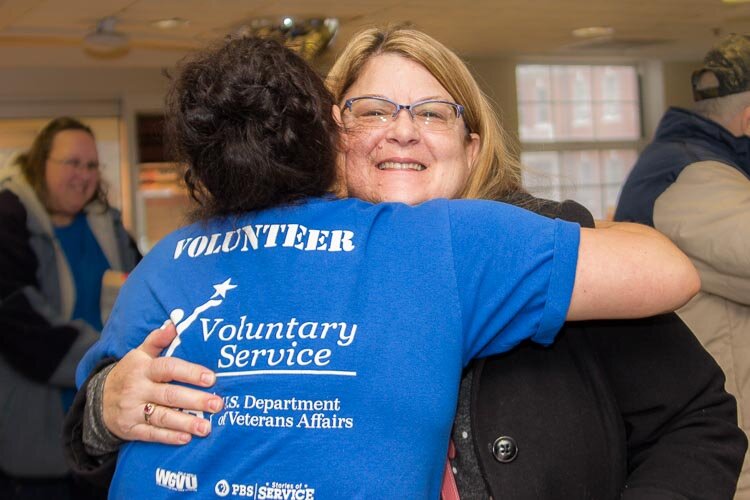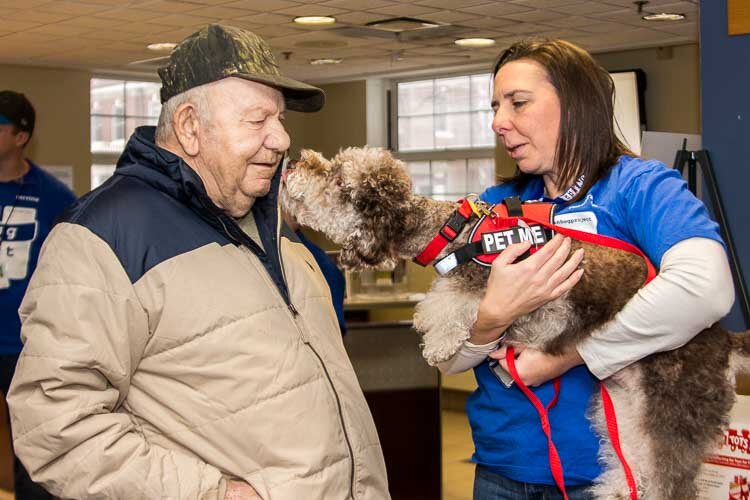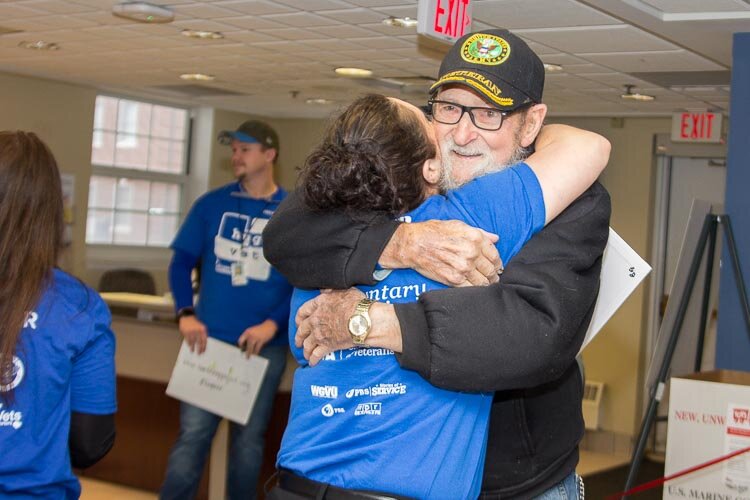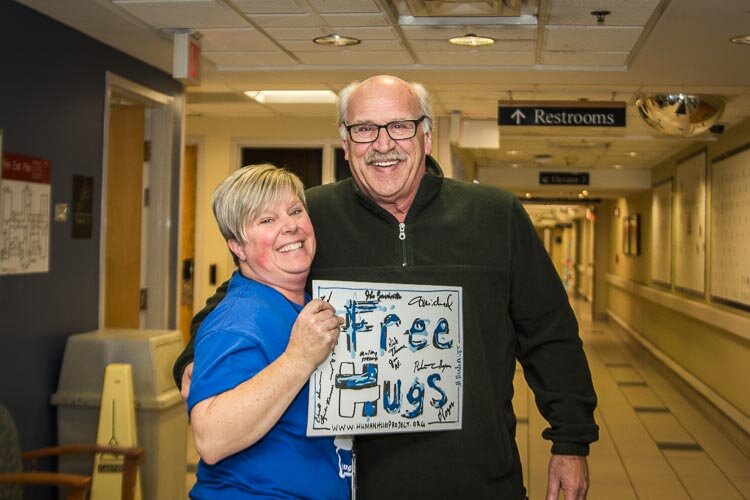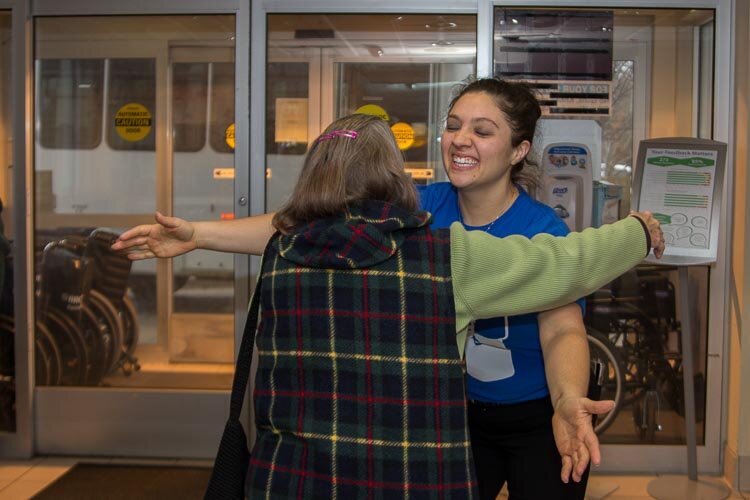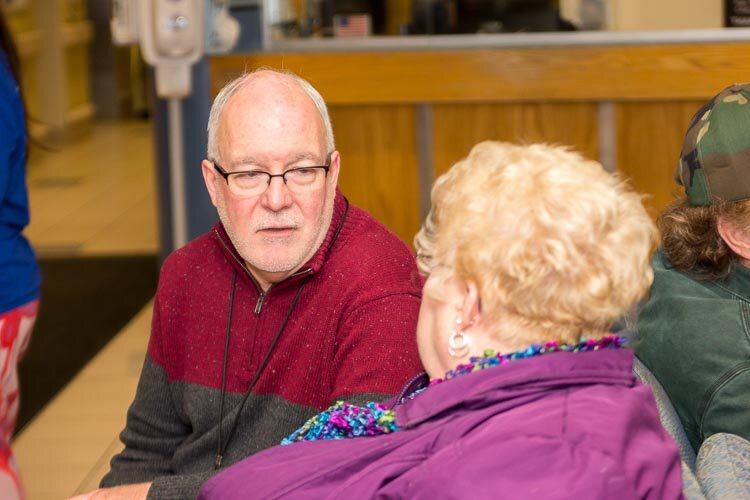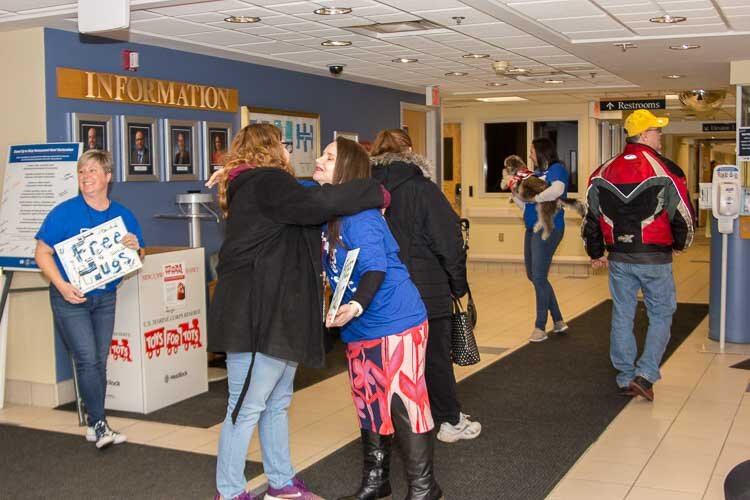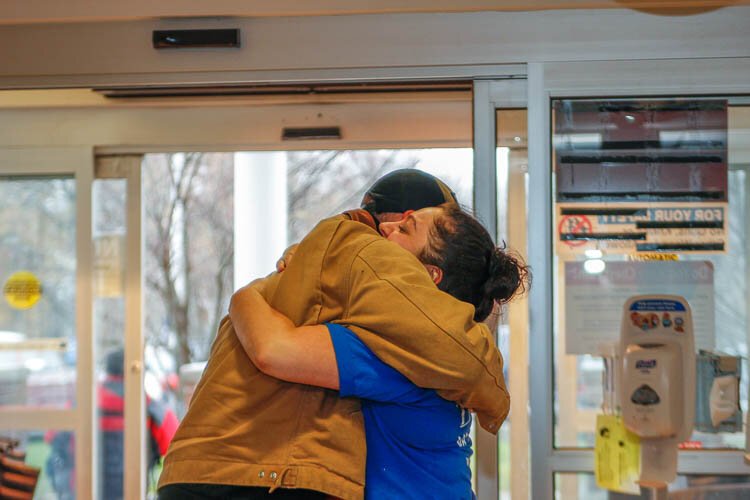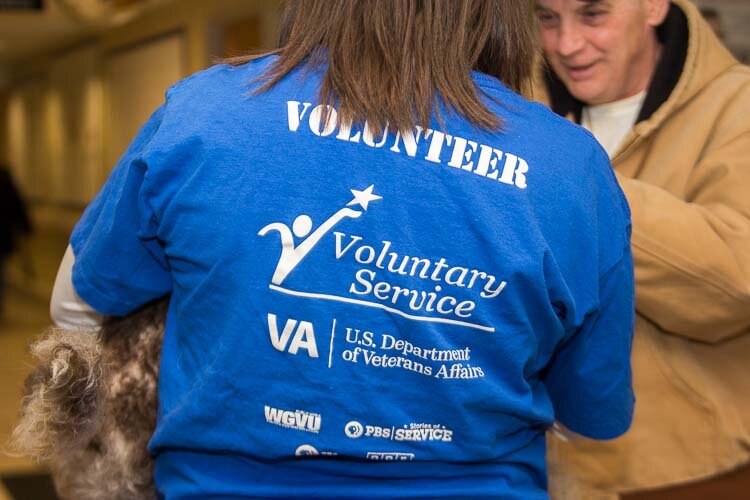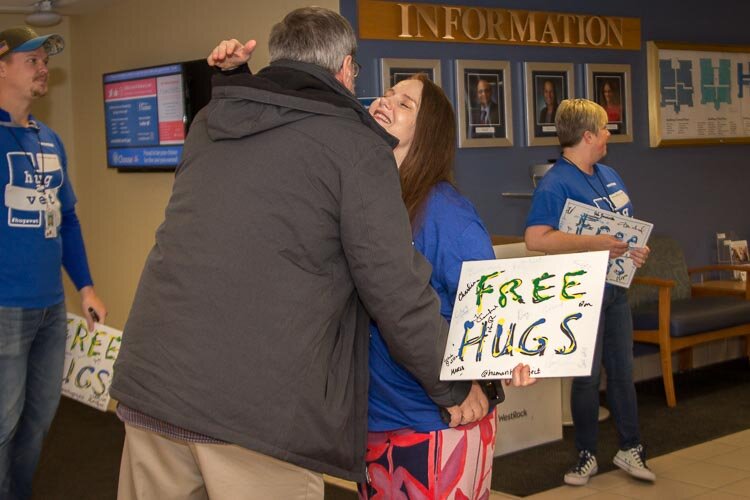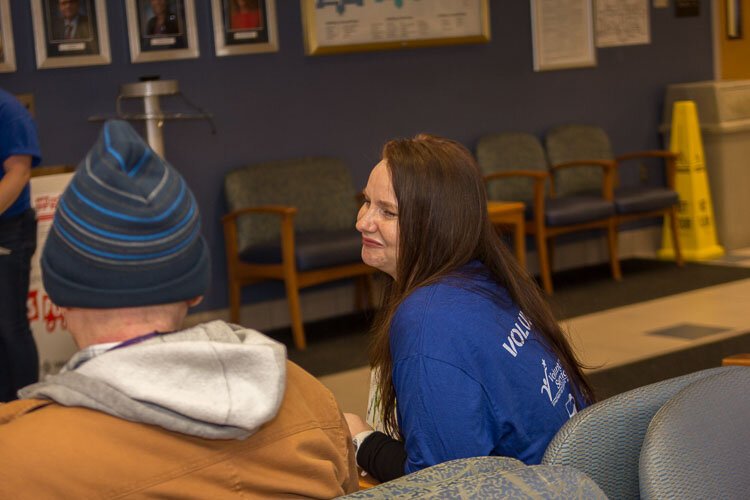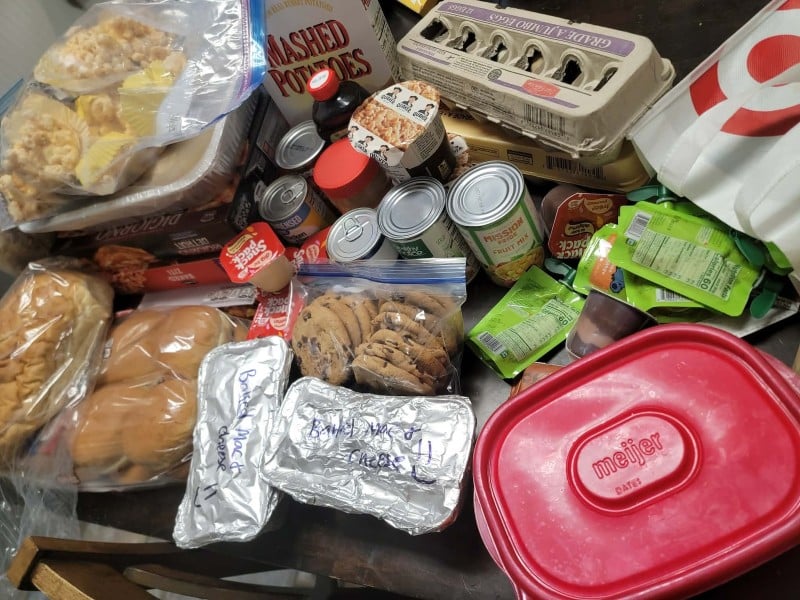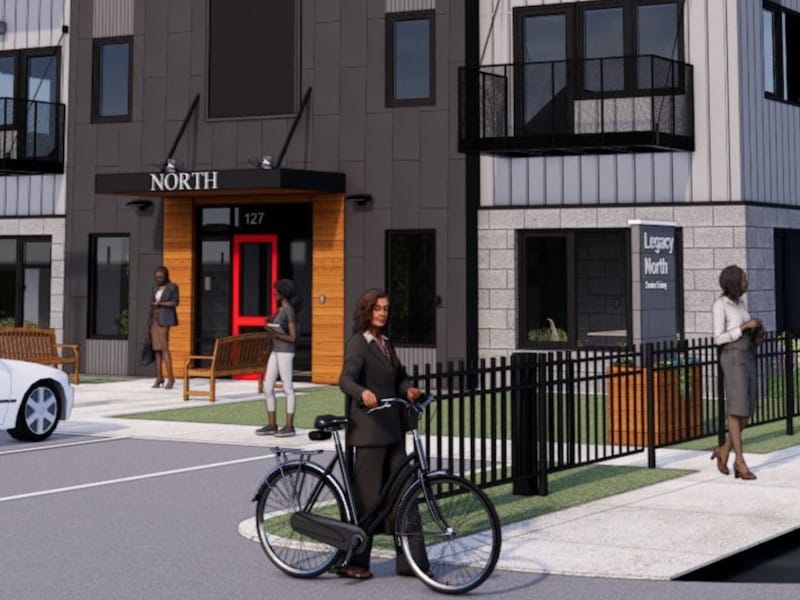Battle Creek’s Hug Ambassadors Program for veterans is a first for the nation
Do you want a hug? Each month volunteers are asking veterans at the VA in Battle Creek that healing question.
Editor’s note: This story is part of Southwest Michigan Second Wave’s On the Ground Battle Creek series.
Hugs are not among the prescribed medical treatments at Battle Creek’s Veterans Administration facility, but those who give and receive them are reaping health benefits that can’t be found in a pill bottle.
Since August, a group of volunteers have been meeting each month inside the VA Medical Center’s main entrance where they greet veterans and ask them if they would like a hug. It is a simple, yet powerful gesture, says Amy Vought. She’s a volunteer with the Kellogg Co. KVets & Supporters program, which focuses on recruitment of veterans to Kellogg’s workforce, and offers supporting programs such as the Human Hug Project at the VA.

Since she began volunteering, Vought says she’s hugged close to 70 veterans. “You can just see a change in their body language and facial expressions,” says the Demand Planner in Kellogg’s frozen food unit. “When we were here in November, we had a man come by and a couple of us hugged him and, as he walked away, he said that was the first time someone’s hugged him in 20 years.”
The connections being made are part of The Hug Ambassador Program, the first of its kind in the nation. In 2016, Battle Creek VAMC partnered with the Human Hug Project to launch a pilot program here and at a VA clinic in Grand Rapids. The successful pilot went on to become a full-fledged program at the Battle Creek VA Medical Center in August of this year.
The Human Hug Project co-founder Ian Michael has been giving out hugs since 2014. That’s when he embarked on a cross-country bicycle ride to raise awareness about the Post-Traumatic Stress Disorder that some veterans experience. Michael, who served with the Marines during Operation Iraqi Freedom, was one of those veterans. He recently started a new position in Portand, Ore., as the Military Liaison for a support program focused on mental health and substance abuse issues for active military veterans and their families.
The mission of his organization, which became a nonprofit in 2015, is direct and to the point: “Our mission is to bring awareness to P.T.S.D. by giving love back to humanity, one hug at a time.”
Michael told Second Wave’s On the Ground that mission has since grown to include raising awareness of mental health issues.
Many returning veterans, especially those who fought in the Vietnam War, were shunned upon their return home and subsequently forgotten. Hug program volunteer Vought says many veterans put up a defensive shield as a coping mechanism.
“You may do that and not realize you’re doing that to protect yourself,” she says of these veterans. “A lot of them have never been welcomed home. We are telling them that, ‘You’re worth us coming here and getting a hug or thank you.
Vought says she was nervous prior to immersing herself in the Hug program because the VA is a hospital treating people who don’t always want to be there.
“You’re dealing with people who may be put off to start with,” she says. But, as the ex-spouse of a deceased serviceperson killed in Afghanistan in an IED explosion, she says she couldn’t not get involved.
During their monthly visits, as a way to let veterans walking through the doors know what’s going on, volunteers hold signs that say “Free Hugs”, offer hugs, and ask if they want to sign their names to the signs.
But, Vought says, not everyone is ready for that type of physical contact. For those who say “no”, a handshake, high five, elbow bump, or a simple, “Thank you for your service” is offered.
“Some will hug, some will shake hands and some will just keep walking,” says Todd Greenman, Chief, Community and Volunteer Service for the Battle Creek VAMC. “Everyone has their own space. We are very cognizant of that and don’t try to invade people’s space. We try to respect their privacy and try not to have too many people together. That can be overwhelming for anybody.”
The hug alternatives are among the things volunteers learn about during four-hour orientation and training sessions offered by the VA. “They talk to us about the things to say or not to say and key things to look for,” Vought says, and this includes suicidal indicators. Veterans are given a card with information on additional resources if they show any indications of being suicidal.
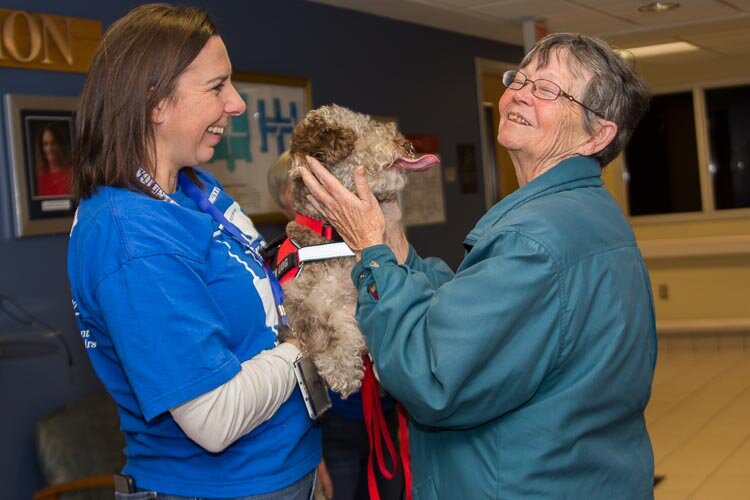
Michael says there’s no doubt that he could have benefitted from support like this when he returned home from his tour of duty. Instead, he tried to manage what he was feeling on his own.
“I went straight from Camp Pendleton to the University of Oregon to study Psychology so I could understand what I was experiencing without asking for help,” Michael says. “When I got out there was this talk of (Post Traumatic Stress Disorder), but we’re also trained in the military that pain is weakness leaving the body, so I never asked for help.”
For the better part of a decade, Michael had friends who never knew that he was a veteran of Operation Iraqi Freedom. It was a part of his life that he didn’t think he needed to talk about.
He never shared that he was an active duty Marine from 1999 to 2004 and one of thousands who were part of the 2003 invasion of Iraq. He also never shared the inner turmoil he experienced after coming home. He says he made the decision to remain silent about his military career in response to a question he was asked after he returned to civilian life.
“Part of my first experience after coming back to the civilian sector was someone asking me if I had killed anyone,” Michael says. Knowing that he would likely be asked this again and again if people knew of his military background, he made an intentional decision to leave this part of his story out even though he was hurting and needed to talk about it.
“I immediately just shut it down. We were trained to get in and to do a mission and we accomplished the mission. I knew if spoke of my Marine Corps experience, this was a question that people would ask, and I was no longer willing to expose myself to that. The hardest part was coming out of this.”
Over the course of about six to eight years after leaving the military, Michael says he realized that he had symptoms of PTSD.
“I come from a military family and my uncle is the third-most decorated in the country. I’d always heard these terms growing up, but after I came back from Iraq my mom said, ‘If you’re not OK, call me’ and something triggered inside me,” Michael says. “I didn’t want to go on or continue. I went home and spent a few days under ‘Mom Therapy’ knowing that I wouldn’t do anything to myself.”‘
One night, while at home, he had a dream about buying a bicycle, even though he had never ridden one. He says the idea of getting on a bike and going cross country was terrifying, but he needed that hope and drive and a goal of having something to do.
“It was hard to find happiness in my life, so I biked across the country and started giving people hugs,” Michael says.
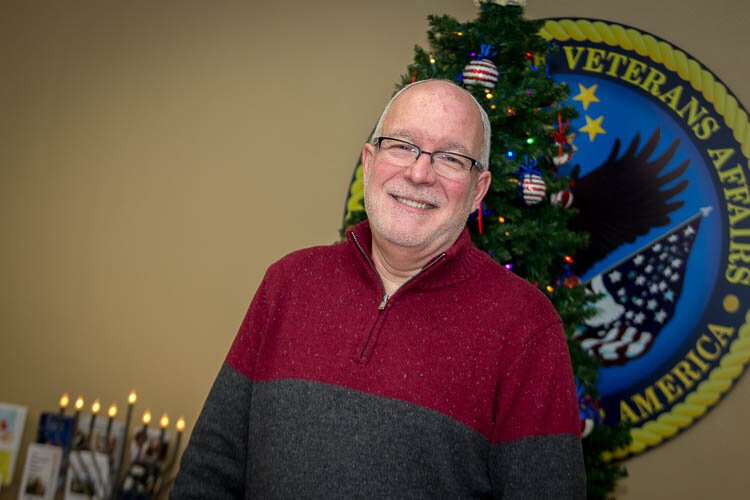
He set off on an 18-month bike ride from southern Illinois to the Grand Canyon making stops at VA facilities along the way to give hugs and words of encouragement to veterans.
One year later, he took off on a second ride in the company of a buddy he had served with in the military. Gino Greganti, a veteran of Operation Enduring Freedom, co-founded the Human Hug Project with Michael. Greganti had experienced the healing power of hugs himself when a social worker recognized that the was not doing well and offered him a hug if he wanted one. The moment was life changing for Greganti.
Together, the two rode from southern Illinois to Washington, D.C., stopping to offer hugs at VA Medical Centers, walk in parades and give hugs to the general public. They financed these trips on their own, using their personal credit cards.
“We hadn’t filed for 501c3 (nonprofit) status because it was originally just going to be one and done, but as we started to hug people at VA hospitals, we realized we needed help to get to more hospitals,” Michael says. “Fifty percent or more of what we’re spending is coming from our own pockets and the rest we’re getting through small donations on Facebook and a couple of organizations have given us $5,000 donations. We’ve never collected a penny ourselves and there’s no paid staff.”
Michael and Greganti reconnected after Greganti’s wife, Erin, reached out to him. “She said he wasn’t doing well and she asked if I would drive to Nashville to give them a hug,” Michael says. “I drove from San Antonio to Nashville to give Gino a hug.”
After they reconnected, their travels took them to a VA in Nashville, Tenn., where the two discovered that the more hugs they gave the better they felt. The visit was intended to be a one time event, but a physician’s assistant in Nashville invited them back and they kept returning. The Nashville VA will formally begin its Hug Ambassador program in February.
“We’d always heard that one VA is one VA and we decided to travel to different VA’s to offer hugs to vets and offer conversations around mental health,” Michael says. “We spent 10 years fighting our own battles with PTSD and fighting stigma because (we thought having PTSD) meant we were weak. By us talking so freely about our own mental health issues, we found that other people started opening up and they knew it was OK to ask for help.”
After hearing the two men speak about their project in 2016 at a meeting attended by VA representatives throughout the country Greenman invited them to Battle Creek.
“I don’t think there was a dry eye in that room while hearing them speak about what they had been through,” Greenman says.
The pair visited 67 VA’s and “really fell in love” with the Battle Creek facility, Michael says.
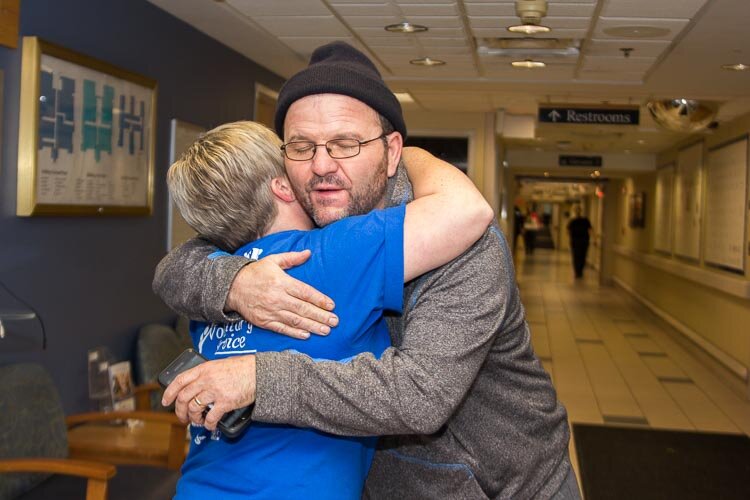
“We discussed the future and what the Hug Project would look like and talked about launching teams,” Michael says. “Through that we were invited to Battle Creek.”
Businesses such as the Kellogg Co. and organizations like WGVU, a public television station in Grand Rapids, partnered with them and Michael and Greganti found themselves making frequent trips to Battle Creek and Grand Rapids to the Wyoming VA clinic. One of the original KVet Hug volunteers will now lead the program at the Wyoming VA clinic.
“They were looking for a VA to start a pilot project,” Greenman says. “They came to Battle Creek on one of their stops and just felt really comfortable with us and that’s how the partnership developed.”
Michael says Greenman’s support for the hug program and the ease with which he and Greganti were able to talk with him sold them on Battle Creek as the pilot site.
“The science behind the healing power of a hug and its ability to connect people with one another was embraced by Todd,” Michael says.
Michael says he would eventually like to see every VA in the United States have a team of volunteer huggers available to meet vets where they’re at. In addition to the Nashville program, another Hug Ambassador program is set to start at a VA in Portland.
He says people will ask him how many people say “no” to him when he offers a hug, high five, elbow bump.
“I would say I have a 95 percent success rate,” he says.
“The best part is when vets start hugging vets. It’s bringing back this camaraderie. We share one common thing in that we all took the same oath and signed the same blank check.”
The response to these hugs, he says, “has been beautiful.”

